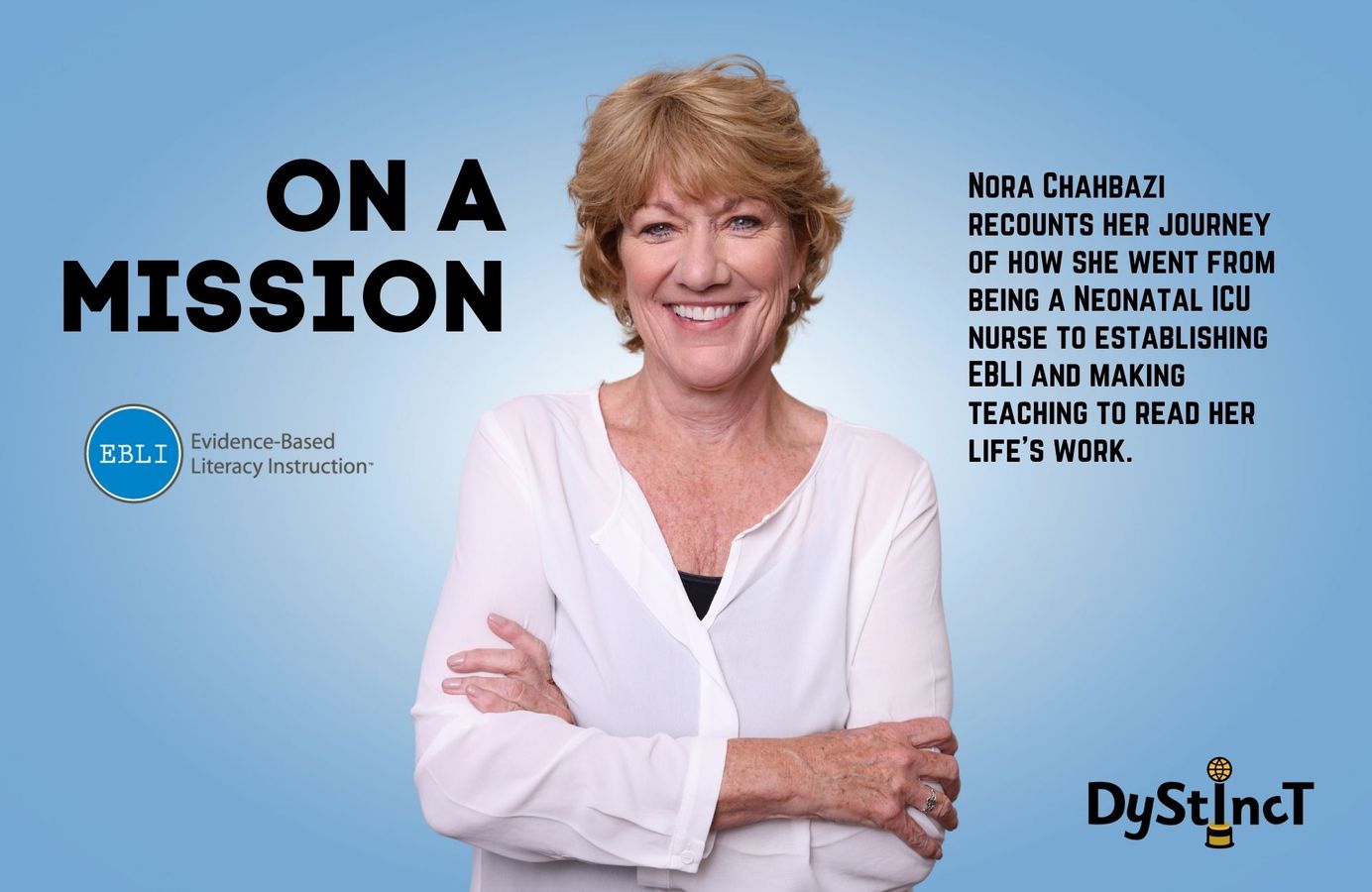
Issue 13: On a Mission | Nora Chahbazi
Nora Chahbazi recounts her journey of how she went from being a Neonatal ICU nurse to establishing EBLI and making teaching to read her life's work.
My literacy journey has been full of countless celebrations as well as frequent challenges and learning opportunities. It has never been dull! It started in 1997 after I had been a Neonatal ICU nurse for a decade. My daughter, in 2nd grade at the time, struggled mightily with reading and spelling. She had highly educated parents, had been read to every day, and attended what were deemed excellent schools. Nevertheless, she was significantly sub-literate.
We first noticed Colleen’s reading difficulties after moving back to the United States from Guam in 1996. The small school my children attended in Guam taught systematic phonics. My oldest daughter picked it up rapidly, and Colleen thrived when instruction consisted of a single letter representing one sound. However, when instruction progressed to learning the complex components of the code and added in phonics rules, she struggled.
Colleen was in first grade when we moved back to Michigan, and in second grade, she scored in the 98th%ile in math on the Iowa test, resulting in her being placed in the school’s gifted and talented program. I later learned that high math scores were common with learners who are highly intelligent but sub-literate or dyslexic. The same Iowa assessment showed her to be a year below grade level in reading. She was a ‘pretend reader’.
High math scores were common with learners who are highly intelligent but sub-literate or dyslexic.
Pretend readers often fool their teachers and parents for a few years. Colleen was perceived as the best reader in the class by her 2nd-grade teacher. She could easily memorize stories read in school. However, she couldn’t read a sentence from that same story if it was pulled out of context and could not read books she hadn’t memorized or seen before. Colleen could spell perfectly on a spelling test but could not spell the same words in writing.
Learning of Colleen’s difficulties because of her inability to read any unfamiliar book and her horrendous spelling in her writing, I started the trek into how to teach reading and spelling. Since Kelly, my youngest, was still a preschooler, I hadn’t returned to nursing yet and had some time on my hands. I began devouring books and research articles on how to teach reading, attended reading trainings, and went to several schools to observe reading instruction.
I quickly realized my daughter wasn’t the only one struggling. Far from it! What I learned from my endless reading and school observations made that very clear. I learned that the national reading scores had shown for years that the majority of 4th and 8th-grade students in our country were not proficient in reading. Also, when I started talking to other parents about Colleen’s literacy difficulties, I learned that almost everyone had a child in a similar situation.
I quickly realized my daughter wasn’t the only one struggling.
After reading the book Why Our Children Can’t Read and then teaching Colleen to read in a manner of hours, I began teaching children of friends and family. Within a year, I was trained in the Phono-Graphix program and soon after became a trainer, teaching classroom and remediation teachers. I "accidentally" ended up with a reading center after the plan for my then-husband’s wellness center fell through. I used the space to train teachers and teach reading to learners of all ages. After 4 years, I created EBLI.
I never had any thought or intention of starting a reading center or any business or of creating a reading system, much less being part of a literacy movement! However, that is exactly what happened.
This post is for paying subscribers only
SubscribeAlready have an account? Log in


